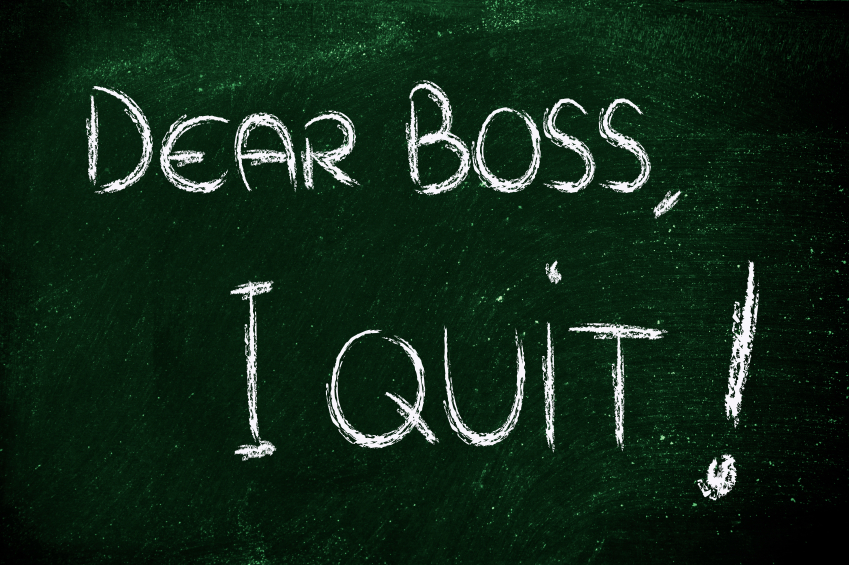When an employee quits, it can throw your business into chaos. While you’re juggling finding the person’s replacement and making sure he or she wraps up the projects he or she was working on, it’s easy to let things slip through the cracks. But a streamlined exit process is essential for any business facing an employee who chooses to leave. If you don’t have a system in place, you’ll find yourself missing important steps.
Whether employees are leaving on good terms or they’re already halfway out the door, there are things that need to get done to ensure professionalism, security compliance, and your company’s path forward. Here are four things you absolutely need to make sure happen when an employee quits to ensure a smooth transition for you and the rest of your team.
Conduct an Exit Interview
Why is this person leaving? It could be simple, like a family relocation, or it could be more complex, like a dissatisfaction with the work he or she was expected to do. The only way to really learn this is to conduct an exit interview. Exit interviews can be eye-opening for a variety of reasons: They help you understand the hardest parts of the job role, they help you get a better grasp on how exactly employees spent their days, and they help you see changes you may need to make when it comes to filling the role in the future. It’s also a simple courtesy.
If someone is leaving the company on good terms, you should give the person an opportunity to voice how he or she felt about working with you and why he or she is leaving. Even if it’s a cut-and-dried answer and there isn’t much you need to change about the role, it’s a way of saying you care about your employees and want to hear what they have to say. As for who should conduct the exit interview, that depends on your company. It could be a manager, a supervisor, or someone in human resources. Having a person who doesn’t know the exiting employee well conduct the interview can be a good thing, as the employee may be more comfortable being open and honest. It can also be a good time to collect the employee’s formal resignation letter.
Complete Security Procedures
To ensure your company won’t be liable for future security issues, it’s essential you go through security procedures with the exiting employee, even if the person is someone you’d trust with your life. This may not seem essential, but you’d regret skipping this step if there were some type of security breach. A complete wipe of the employee’s security connection with your company is a must and could entail:
- Retrieving any keys, including those for the parking garage or on-site facilities like gyms;
- Wiping company laptops and desktops of any personal information;
- Changing passwords and resetting e-mail accounts;
- Making sure any important information, like keycodes, is left with the company for the next employee;
- Collecting any company property, including anything the employee may have taken home or kept in his or her car; and
- Removing access to any company databases.
Write a Job Description
Why is it so important to have a job description written before an employee actually leaves? Simple: to ensure you get the description right. You may think you know what someone did on a day-to-day basis, but there are likely tasks this employee was in charge of that you were unaware of. Thus, employees can be a great resource when it comes to crafting job descriptions and helping to find their replacement. In fact, if you have employees write the description themselves, you’ll have something to work from. To help the process along, you can give employees some questions to prompt them, such as:
- What were your most important job roles?
- What did you spend the most time doing?
- What were some metrics you were in charge of?
- What do more people need to know about your job position?
You can also take this opportunity to freshen up the roles and responsibilities of a particular position. But it’s still important to hear from the departing employee what his or her daily duties were. If they aren’t going to be covered by this position any longer, they still need to be covered by somebody. It’ll be easier to reassign these roles once you have them listed out clearly.
Tell the Staff
Lastly, it’s important that you and the exiting employee decide together how you’re going to inform the staff about his or her upcoming departure. It’s important that the rest of the team learn at relatively the same time—otherwise, there can be confusion and office politics that are hard to navigate. If you want to tell the executive team or higher-level employees first, that’s your call, but don’t leave too wide of a gap between that meeting and telling the rest of the employees.
Telling everyone simultaneously is the easiest way to go about this, whether it’s at an employee event or via e-mail. If the employee has a few close coworkers he or she would like to inform first, make sure you know when those conversations will take place so you have a firm understanding of who in the office knows and who doesn’t. Letting an employee “ghost” your business by simply not showing up one day without formally announcing it to the rest of the staff first is a mistake.
Although it may seem tempting to sidestep awkward conversations, the truth is that letting an employee simply disappear is actually going to create even more tension. It will also leave staff feeling like they don’t know what’s going on with the company, which is never something you want your team to feel. You and the employee should be on the same page; craft a plan to tell the rest of your staff, and then execute it.

